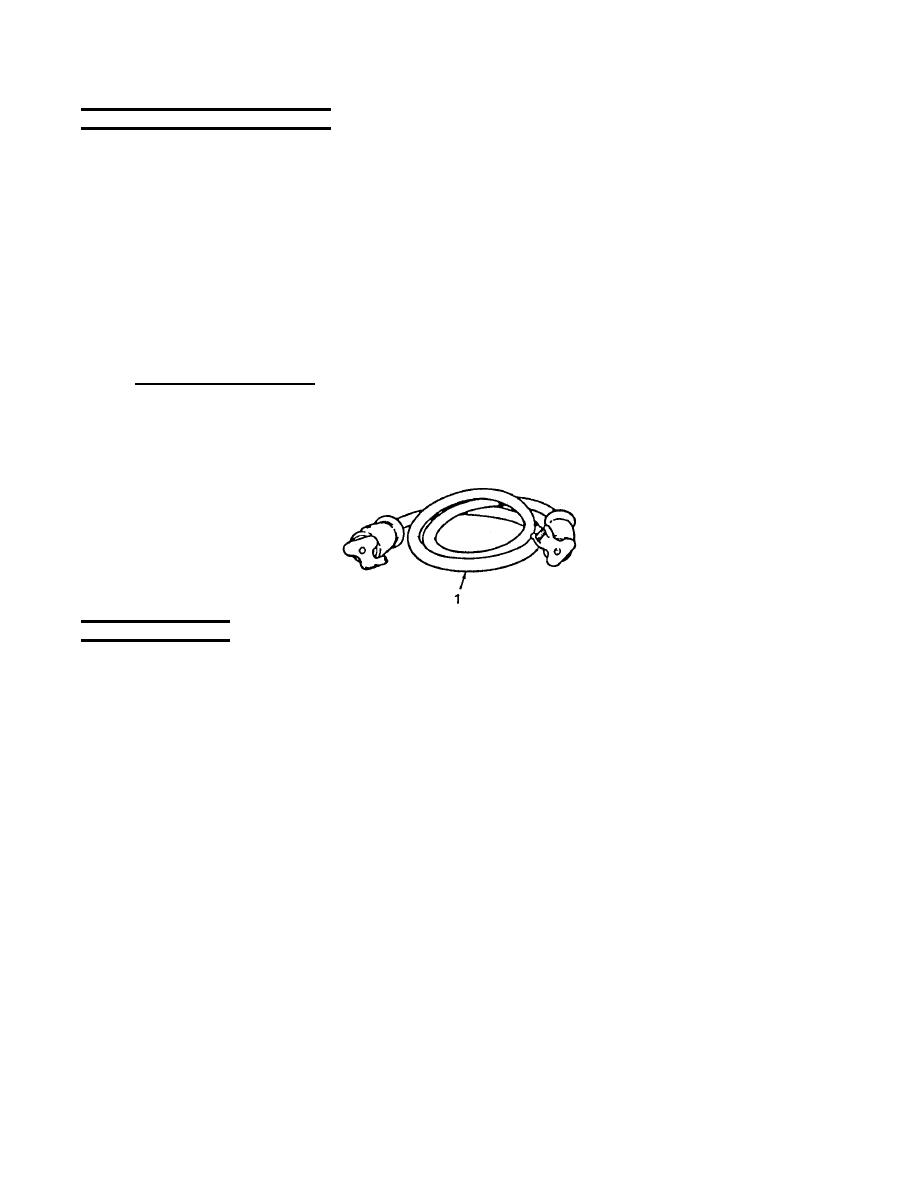
TM 9-2330-383-14&P
2-1. LIGHTING SYSTEM (CONT)
(2)
Two rear red marker reflectors (2).
(3)
Three rear red marker lights (3).
(4)
Two red rear side lights (4) located left and right. Two red reflectors
(5) located right and left.
(5)
Two amber reflectors (6) and two amber clearance marker lights (7)
located on left and right sides of trailer front.
(6)
Two amber lights (8) and two amber reflectors (9) located on front end
of HEMAT.
b. Intervehicular Cable. The intervehicular cable (1) is used to connect the
trailer lighting system to the towing vehicle electrical system during towing
operations. The cable plugs are keyed so that they can only be connected to the
trailer connector and the towing vehicle connectors in one way. The lights are
operated from the towing vehicle. When not in use, the cable is stowed in the
storage box.
AIR SYSTEM
The pneumatic system is a standard two-line air brake system which includes
emergency and parking brake features. The system is pressurized by the tractor
through the emergency (supply) air line (1), gladhand (2), and air cleaner (3) to
the left rear (4), right rear (5), and right front air reservoir (6), where air is
stored. Air pressure is automatically applied to the rear spring brakes (7) to
release them for normal operation. When any of the brake controls on the tractor
are activated, pressure is provided from the tractor through the service (control)
air line (8), gladhand (9), and air cleaner (10) to two relay valves (11), which
release air pressure from reservoirs (4, 5, and 6) to operate four service brakes
(12) for normal trailer braking and parking brake operations. From the three
reservoirs, air is also supplied to the left front (13), right front (14), and rear
leveling valve (15), which pressurize the four air suspension bags (16). If air
pressure drops below approximately 60 psi, the pressure protection valve (17) cuts
off air to leveling valves (13, 14, and 15), leaving air pressure to operate the
service brakes only. If there is a major component failure or line rupture in the
system, or the trailer is disconnected from the tractor, the multifunction valve
(18) disables both relay valves (11) and releases air from the rear spring brake
chambers, applying the rear spring brakes (7). The rear spring brakes (7) can be
released by pushing the knob inward on the brake control valve (19), or by
connecting the trailer to the tractor and recharging the air system. If the system
has no air pressure, rear spring brakes can be manually released by caging.
2-2

